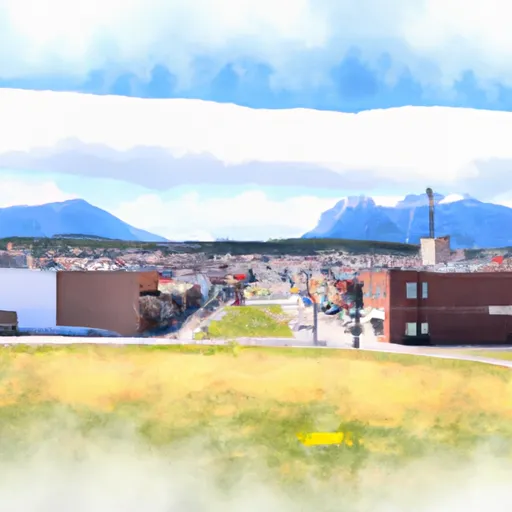-
 Snoflo Premium
Snoflo Premium
Get unlimited access to all our content
With no Ad interruptions! - Start Your Free Trial Login with existing account
Fairview
Eden Index
Climate
6.7
•
Recreation
6.1
•
Community
•
Safeguard
4.8/10

Fairview, Montana is a small town located in northeastern Montana with a semi-arid climate characterized by cold winters and hot summers. The town is situated in the Yellowstone River Basin, which is the primary water source for the area. The river and its tributaries provide opportunities for boating, fishing, and other outdoor activities. The area is also known for its vast grasslands and rolling hills, providing excellent wildlife habitat and opportunities for hunting and hiking. However, due to the region's semi-arid climate, water management is of significant concern, especially concerning agricultural irrigation practices. In recent years, the area has experienced drought conditions, highlighting the importance of responsible water use and management.
What is the Eden Index?
The Snoflo Eden Index serves as a comprehensive rating system for regions, evaluating their desirability through a holistic assessment of climate health, outdoor recreation opportunities, and natural disaster risk, acknowledging the profound impact of these factors on livability and well-being.
Climate Health Indicator (CHI): 6.7
Fairview receives approximately
362mm of rain per year,
with humidity levels near 79%
and air temperatures averaging around
7°C.
Fairview has a plant hardyness factor of
4, meaning
plants and agriculture in this region thrive during a short period during spring and early summer. Most
plants will die off during the colder winter months.
By considering the ideal temperature range, reliable water supplies, clean air, and stable seasonal rain or snowpacks, the Climate Health Indicator (CHI) underscores the significance of a healthy climate as the foundation for quality living.
A healthy climate is paramount for ensuring a high quality of life and livability in a region, fostering both physical well-being and environmental harmony. This can be characterized by ideal temperatures, reliable access to water supplies, clean air, and consistent seasonal rain or snowpacks.
Weather Forecast
Streamflow Conditions
Lower Yellowstone
Area Rivers
Lower Yellowstone
Snowpack Depths
Lower Yellowstone
Reservoir Storage Capacity
Lower Yellowstone
Groundwater Levels
Recreational Opportunity Index (ROI): 6.1
The Recreational Opportunity Index (ROI) recognizes the value of outdoor recreational options, such as parks, hiking trails, camping sites, and fishing spots, while acknowledging that climate plays a pivotal role in ensuring the comfort and consistency of these experiences.
Access to outdoor recreational opportunities, encompassing activities such as parks, hiking, camping, and fishing, is crucial for overall well-being, and the climate plays a pivotal role in enabling and enhancing these experiences, ensuring that individuals can engage in nature-based activities comfortably and consistently.
Camping Areas
| Campground | Campsites | Reservations | Toilets | Showers | Elevation |
|---|---|---|---|---|---|
| Brush Lake State Park | 12 | 1,958 ft | |||
| Fort Buford State Historic Site | None | 1,901 ft | |||
| Seven Sisters FAS | None | 1,914 ft | |||
| Sharbano City Park | None | 1,912 ft | |||
| Sundheim Park | None | 1,887 ft | |||
| Confluence Access | None | 1,877 ft | |||
| Snowden Bridge FAS | None | 1,867 ft |
Catastrophe Safeguard Index (CSI):
The Catastrophe Safeguard Index (CSI) recognizes that natural disaster risk, encompassing floods, fires, hurricanes, and tornadoes, can drastically affect safety and the overall appeal of an area.
The level of natural disaster risk in a region significantly affects safety and the overall livability, with climate change amplifying these risks by potentially increasing the frequency and intensity of events like floods, fires, hurricanes, and tornadoes, thereby posing substantial challenges to community resilience and well-being.
Community Resilience Indicator (CRI):
The Community Resilience Indicator (CRI) recognizes that education, healthcare, and socioeconomics are crucial to the well-being of a region. The CRI acknowledges the profound impact of these elements on residents' overall quality of life. By evaluating educational resources, healthcare accessibility, and economic inclusivity, the index captures the essential aspects that contribute to a thriving community, fostering resident satisfaction, equity, and social cohesion.

